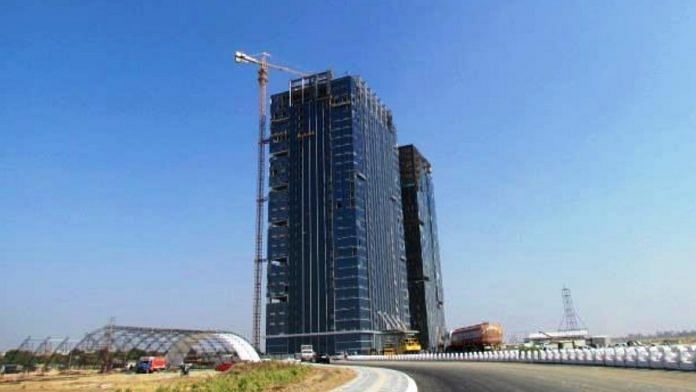New Delhi: The Indian Institute of Information Technology, Hyderabad (IIIT-H), in collaboration with the National Disaster Management Authority (NDMA) have developed a methodology for better insight into the structural safety of buildings in the wake of earthquakes.
The team of scientists has developed a Rapid Visual Screening (RVS) methodology for earthquake safety assessment for seven building topologies.
Pradeep Kumar Ramancharla, professor at IIIT-H who headed the project, told ThePrint that the methodology can be referred to by state governments, banks, insurance companies, etc. for assessment of pre- as well as post-earthquake “building safety activities”.
Union Education Minister Ramesh Pokhriyal Nishank also took to Twitter Friday to congratulate the team for developing the methodology.
.@iiit_hyderabad along with @ndmaindia, have developed Rapid Visual Screening (RVS) a methodology for testing the strength of building to withstand #earthquakes.
Prof Pradeep Ramancharla of #IIITH led the project. pic.twitter.com/h9QqSyyULB
— Dr. Ramesh Pokhriyal Nishank (@DrRPNishank) October 23, 2020
Also read: IIT Kharagpur unveils COVIRAP, a Covid test that costs Rs 500 & delivers results in 1 hour
Assessing seismic vulnerability of buildings
Ramancharla explained that the RVS methodology developed by the team can be used before and after an earthquake to understand the threat to lives and determine whether a building can be occupied after a quake.
“RVS methodology before an earthquake can be used to assess the status of buildings constructed, along with the five domains — namely siting, architectural form, structural system, material condition, and construction details — and use the same in initiating modifications to by-laws and Indian standards,” he said.
Each building can be assessed in about 15-30 minutes using the RVS method. The team of assessors can stand in front of a building, without entering it or having to undertake any technical calculations.
This assessment method is useful in projecting a scenario of possible damage during an earthquake of expected intensity. The method is based purely on visual observations, the professor added.
“This RVS methodology can be eventually referred as a base document by various stakeholders to visually examine a building and identify features such as the building types, seismic zones, soil conditions, horizontal and vertical irregularities, apparent quality in buildings and short column etc. that affect the seismic performance of a building,” Ramancharla said.
The methodology also gathers information about a building’s occupancy and the presence of non-structural hazards that can also cause destruction during an earthquake.
While the principal purpose of the RVS method is to identify buildings that are potentially vulnerable to strong earthquakes, the results from this methodology can also be used for other purposes, including ranking a community’s earthquake retrofit needs, designing earthquake disaster mitigation programmes and planning post-earthquake building safety evaluation efforts.
The team has studied the structural strength of around 20,000 buildings in Bhuj, Gujarat, which was hit by a massive earthquake in 2001, and 10,000 buildings in 10 districts of Himachal Pradesh using this methodology.
Also read: 2 IIT Bombay students discovered the asteroid that flew closest to Earth



